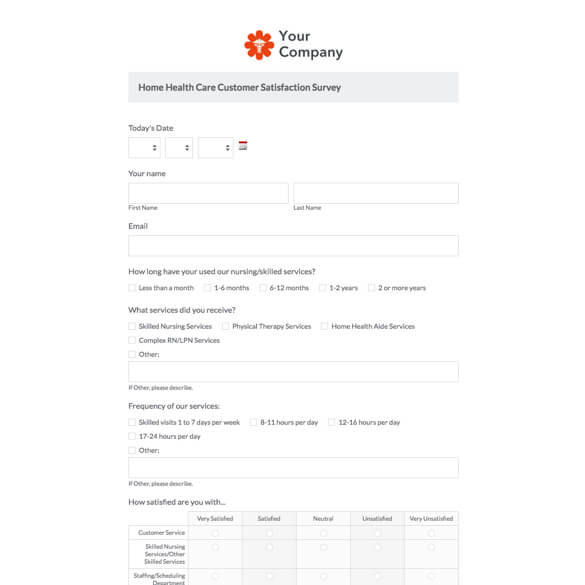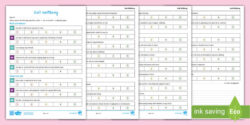Ensuring the well-being and happiness of residents in a care home is at the heart of everything you do. But how do you truly know if you’re hitting the mark? It’s not just about providing excellent medical care and comfortable surroundings; it’s also about understanding the nuanced experiences of those living there and their families. This is where listening becomes your most powerful tool, and a well-structured survey can make all the difference.

Regularly gathering feedback helps you identify what’s working beautifully and where there might be opportunities for growth. It shows residents and their loved ones that their voices are valued and that their comfort and happiness are a top priority. Moving beyond anecdotal evidence to concrete data can transform your approach to care, leading to genuine improvements that enhance quality of life for everyone involved.
Why a Standardized Template Matters for Your Care Home
When it comes to gathering feedback, consistency is key. Imagine trying to compare results from one year to the next if your questions are constantly changing. It would be nearly impossible to track progress or identify trends. That’s why having a standardized care home satisfaction survey template is so incredibly valuable. It provides a consistent framework, ensuring that you’re asking the right questions in the same way every time, allowing for meaningful comparisons and long-term analysis.
Using a template doesn’t mean you can’t adapt it to your specific needs; rather, it means you have a solid foundation to build upon. It ensures that no critical areas are overlooked and that you’re covering all the bases, from the quality of personal care to the atmosphere of social activities. This systematic approach not only makes the survey process more efficient but also lends credibility to your data, showing stakeholders that your commitment to quality is unwavering and professionally managed.
Moreover, a pre-designed template often incorporates best practices in survey design, helping you avoid common pitfalls like biased questions or unclear phrasing. It can guide you in structuring the survey logically, making it easy for residents and their families to complete, which in turn leads to higher response rates and more comprehensive data. Think of it as a blueprint that helps you construct a robust and informative feedback system without having to start from scratch every time.
Ultimately, a reliable care home satisfaction survey template becomes a vital asset for continuous improvement. It transforms subjective opinions into measurable insights, empowering you to make data-driven decisions that directly impact resident well-being and overall operational excellence. It’s about moving beyond simply responding to issues and proactively shaping a better living experience.
Essential Elements of a Comprehensive Survey
- Quality of Care: Questions about personal care, medical attention, medication management, and response times from staff.
- Staff Interaction: Inquiries about staff professionalism, friendliness, communication skills, and willingness to listen.
- Living Environment: Feedback on cleanliness, comfort of rooms, communal areas, and overall maintenance of the facility.
- Food and Dining: Opinions on meal quality, variety, dietary accommodations, and dining experience.
- Activities and Engagement: Questions about the range, suitability, and enjoyment of social activities, outings, and recreational programs.
- Communication: How well the care home communicates with residents and their families regarding changes, updates, or concerns.
- Overall Satisfaction: General questions about the resident’s happiness and whether they would recommend the care home to others.
Crafting Questions That Truly Matter
Once you have a template, the next crucial step is ensuring the questions you ask genuinely elicit useful, actionable feedback. It’s not enough to simply ask if someone is “satisfied”; you need to dig deeper to understand the ‘why’ behind their answers. Well-phrased questions are clear, unambiguous, and avoid leading respondents towards a particular answer. They encourage honest reflection and provide specific insights into various aspects of care home life, allowing you to pinpoint exact areas for improvement.
Consider using a mix of question types. Likert scale questions (e.g., “strongly agree” to “strongly disagree”) are excellent for quantifying opinions and tracking changes over time. However, don’t underestimate the power of open-ended questions. These allow residents and families to elaborate on their experiences, sharing stories and suggestions that might not fit into predefined categories. This qualitative data can provide invaluable context and highlight issues or opportunities you hadn’t even considered.
When drafting questions, always try to put yourself in the shoes of a resident or their family member. Is the language easy to understand? Is it respectful? Are you asking about things that truly impact their daily lives and well-being? Involving a small group of residents or family representatives in the question-drafting process can be incredibly beneficial, ensuring that the survey is relevant and resonates with the community you serve.
Finally, remember that gathering feedback is only half the battle; acting on it is what truly demonstrates your commitment. Clearly communicate how the feedback will be used and, where appropriate, share the results and the actions you’ve taken based on the insights gained. This transparency builds trust and encourages continued participation in future surveys, creating a virtuous cycle of feedback and improvement.
Administering your survey effectively also plays a significant role in its success. Make it accessible for everyone, offering multiple formats if necessary, such as paper copies or online versions. Provide clear instructions and ensure privacy and confidentiality so respondents feel comfortable sharing their honest thoughts. A thoughtful approach to distribution can greatly enhance participation rates and the richness of the data collected.
Once your results are in, it’s not just about looking at numbers. It’s about interpreting what they mean for the real people living in your care home. This continuous cycle of asking, listening, and acting is fundamental to fostering an environment where residents not only receive excellent care but also feel genuinely happy and fulfilled. It’s about creating a place that truly feels like home, built on trust and a deep understanding of individual needs and preferences.

